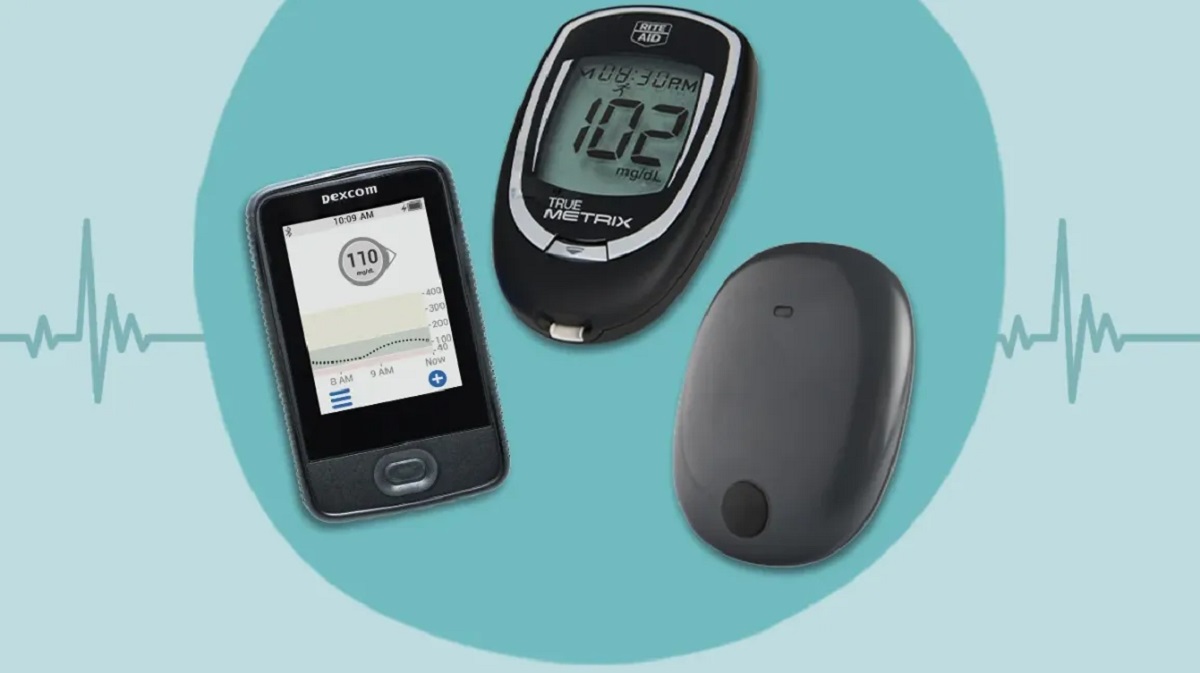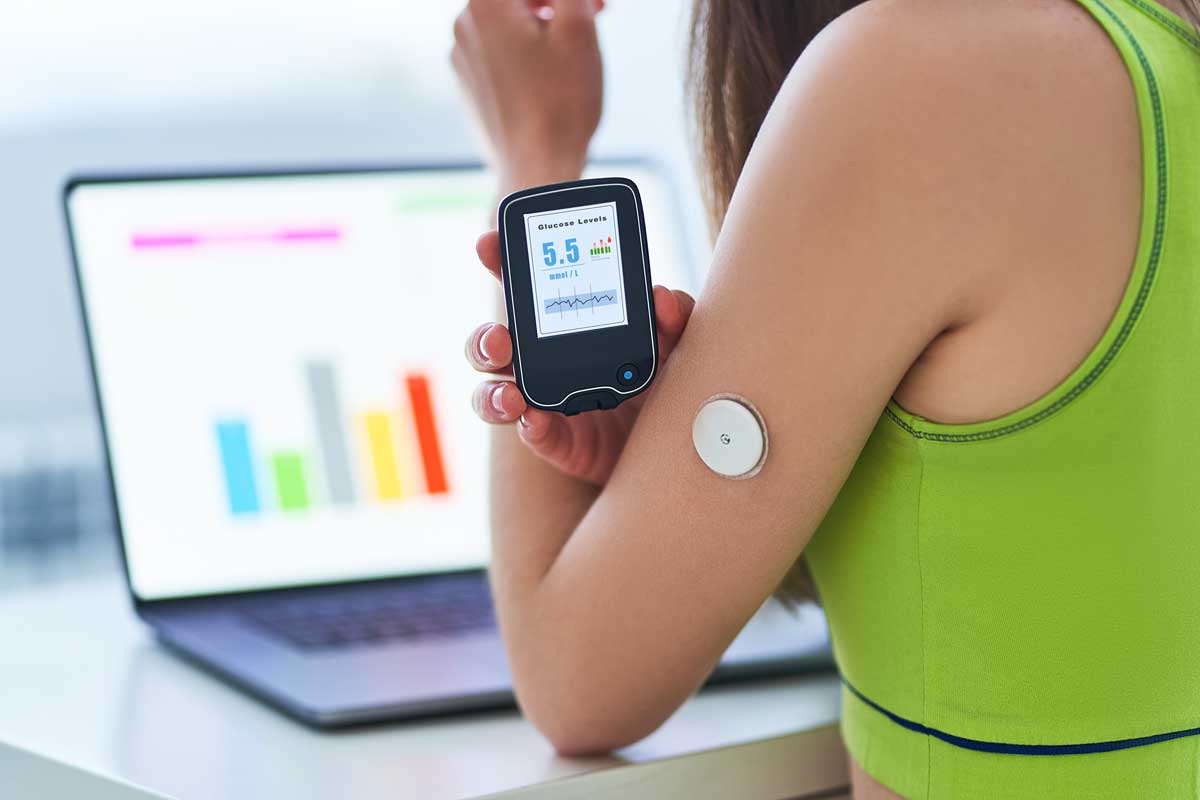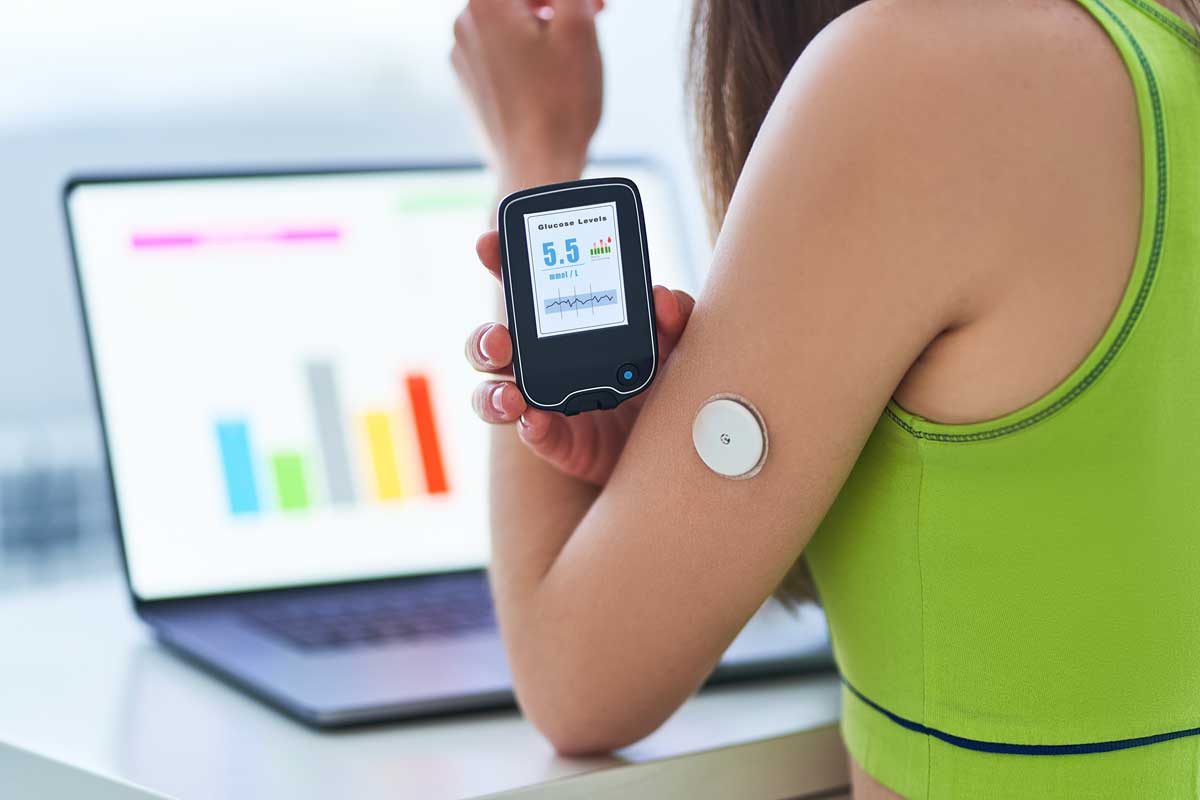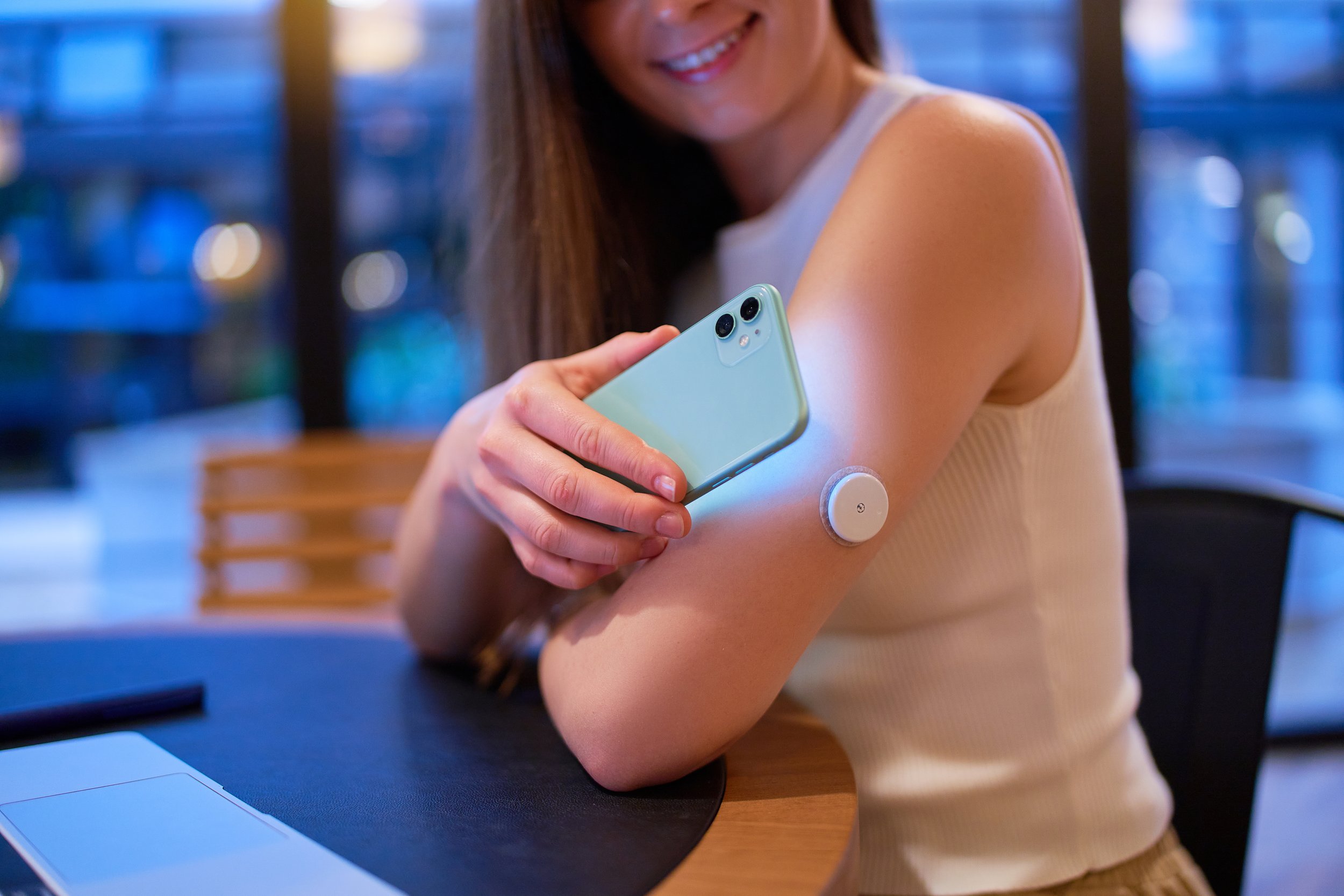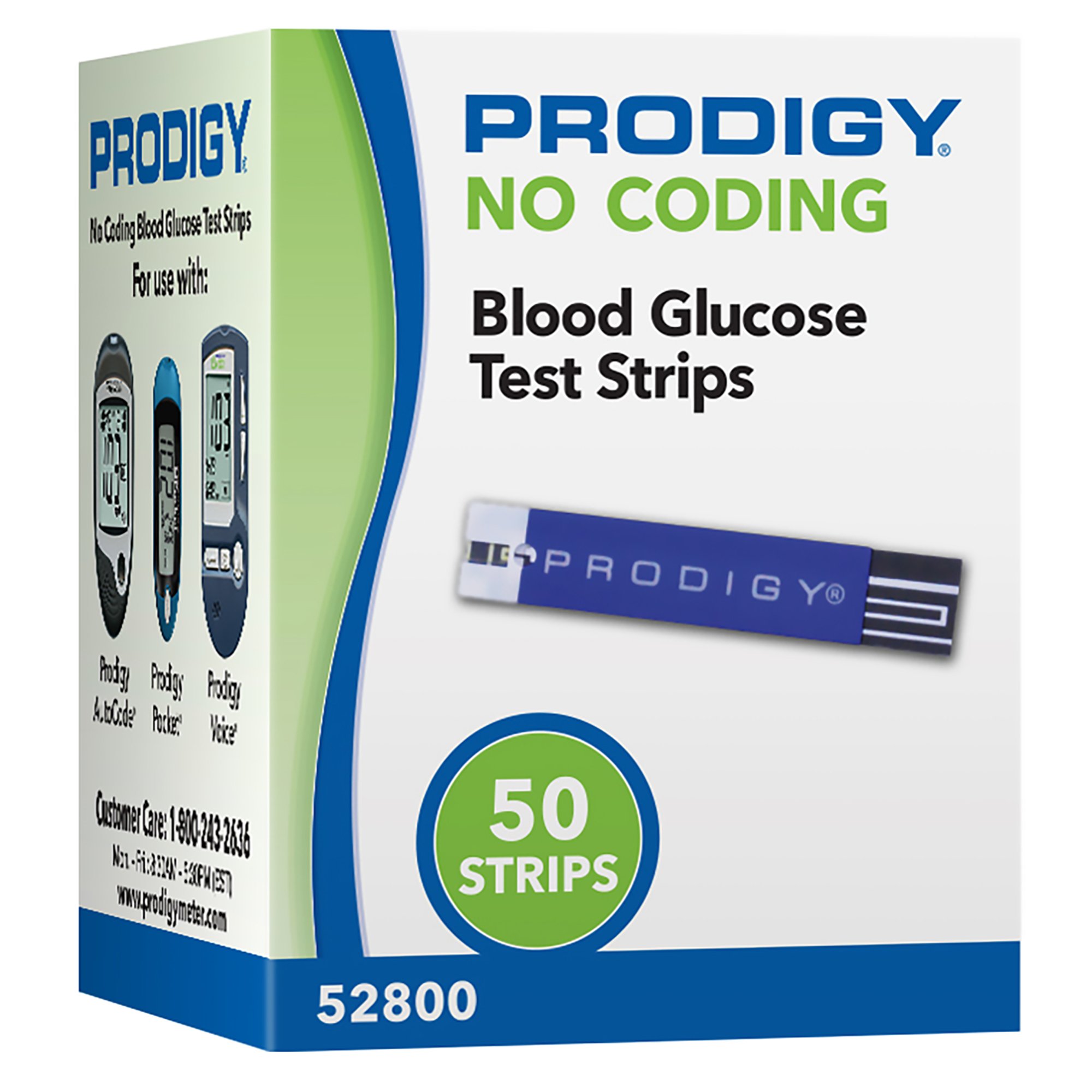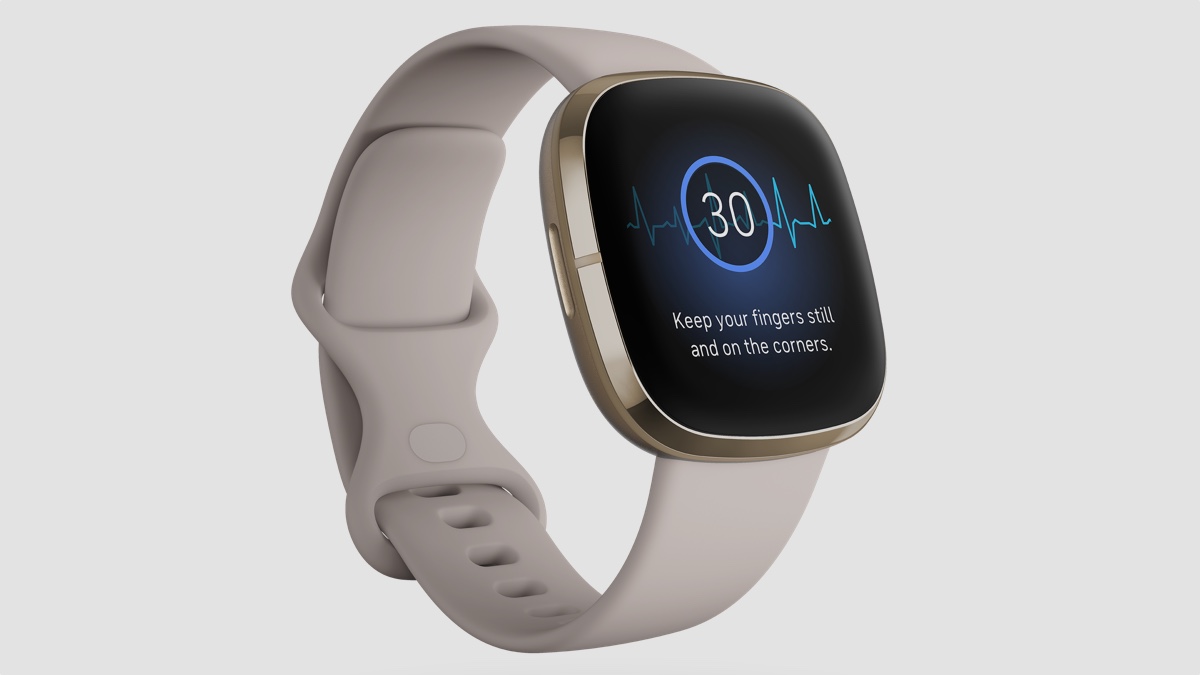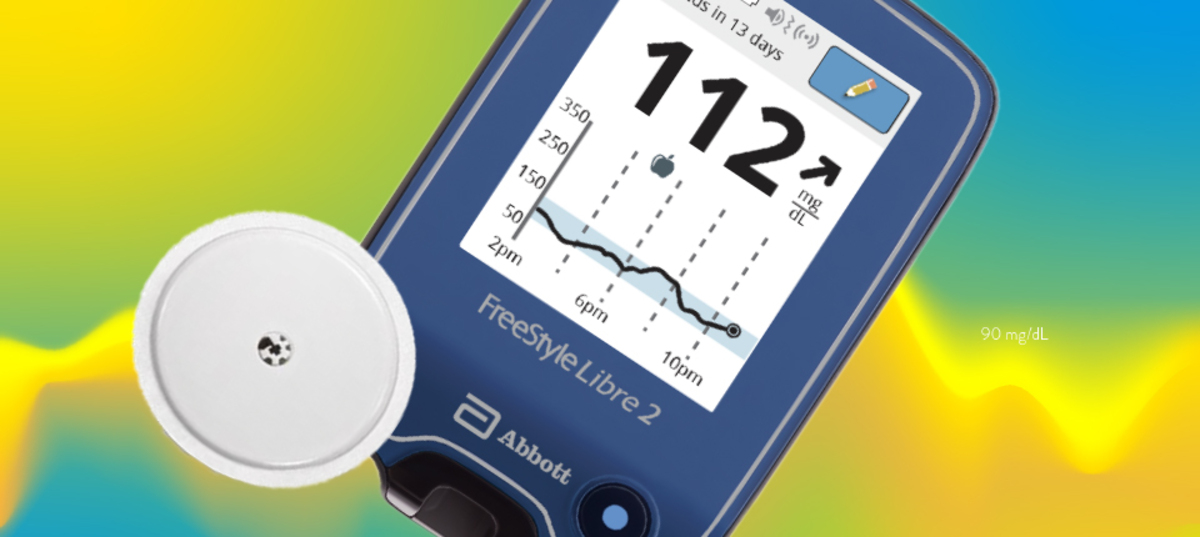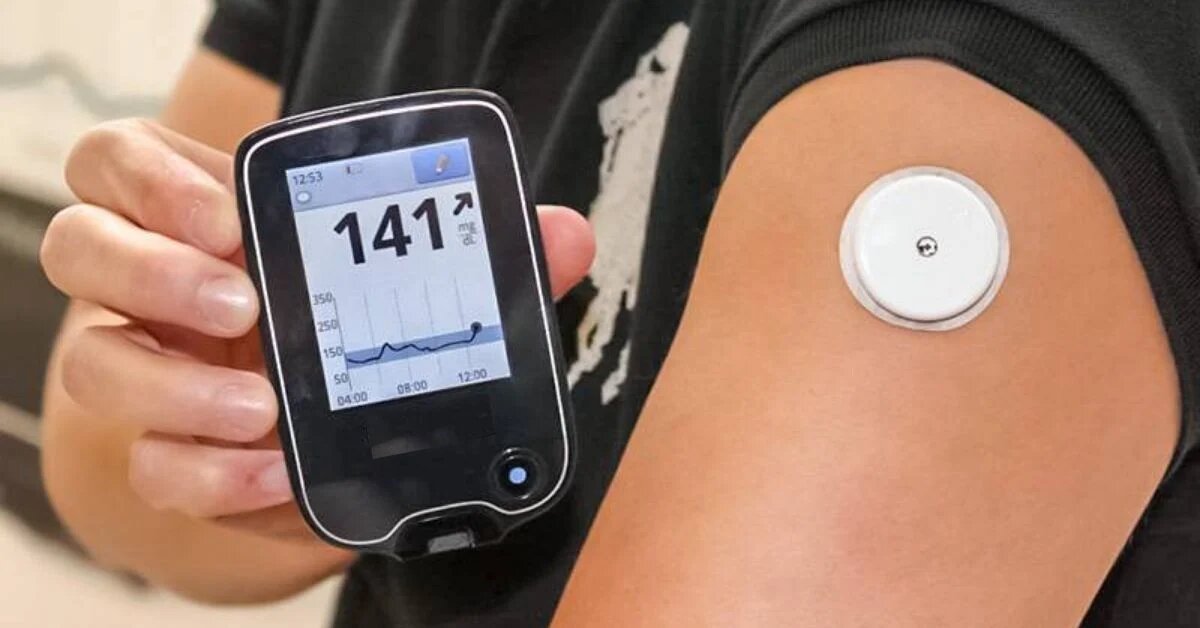Introduction
Welcome to the world of continuous glucose monitoring! If you or a loved one has been diagnosed with diabetes, you may be familiar with the challenges of managing blood sugar levels throughout the day. Traditional fingerstick testing can provide valuable snapshots of glucose levels, but it’s not always convenient or accurate enough to get a comprehensive understanding of how your blood sugar fluctuates.
This is where a continuous glucose monitor (CGM) comes in. A CGM is a small device that tracks your glucose levels throughout the day and provides real-time data, helping you make informed decisions about your diabetes management. With the advancement of technology, CGMs have become an invaluable tool for individuals with diabetes, offering a level of convenience and accuracy that can greatly improve quality of life.
In this article, we will explore the world of continuous glucose monitoring, from understanding what a CGM is to navigating the process of obtaining one. Whether you’re new to the concept of CGMs or looking for guidance on choosing the right one, we’ve got you covered.
Throughout this article, we will delve into the benefits of using a continuous glucose monitor, learn how it works, explore different types of CGMs, and discuss the features to consider when choosing one. We will also touch upon the process of getting a prescription, insurance coverage, and where to purchase a CGM.
Once you have your CGM in hand, we’ll guide you through the steps of setting it up, using it correctly, calibrating it, and troubleshooting common issues. Additionally, we’ll share tips and best practices to help you get accurate and reliable readings from your CGM.
By the end of this article, you’ll have a comprehensive understanding of continuous glucose monitoring and be well-equipped to navigate the world of CGMs with confidence. So, let’s dive in and discover how continuous glucose monitoring can revolutionize your diabetes management!
What is a Continuous Glucose Monitor?
A continuous glucose monitor (CGM) is a small electronic device that measures and tracks glucose levels in real-time throughout the day. It consists of three main components: a sensor, a transmitter, and a receiver or smartphone app.
The sensor, typically inserted just beneath the skin, continuously measures the glucose levels in the interstitial fluid. This fluid surrounds the body’s cells and closely reflects blood glucose levels. The sensor uses a tiny filament to measure glucose levels and sends the data to the transmitter.
The transmitter, attached to the sensor, wirelessly sends the glucose data to a receiver or smartphone app. The receiver or app displays the glucose readings in real-time, allowing users to monitor their levels and make diabetes management decisions accordingly.
Continuous glucose monitoring offers a more comprehensive view of blood sugar patterns than traditional fingerstick tests. Instead of relying on periodic measurements, CGMs provide a continuous stream of data, allowing users to observe trends and identify fluctuations that might go unnoticed otherwise.
Most CGMs also include customizable alerts and alarms to notify users of high or low glucose levels. These alerts can be a game-changer, as they provide timely reminders to take action and prevent potential diabetes complications. Additionally, CGMs record historical data, enabling healthcare providers to analyze trends and make informed treatment decisions.
It’s important to note that continuous glucose monitoring is not a replacement for fingerstick testing or regular visits to healthcare professionals. Instead, it complements traditional methods by providing additional insights and empowering individuals to make proactive decisions regarding their diabetes management.
Now that we understand what a continuous glucose monitor is, let’s explore the numerous benefits it offers to individuals with diabetes.
Benefits of Using a Continuous Glucose Monitor
Continuous glucose monitoring (CGM) offers a range of benefits that can vastly improve the lives and diabetes management of individuals. Let’s explore some of the key advantages:
1. Real-time glucose monitoring:
A CGM provides real-time glucose readings, allowing users to monitor their blood sugar levels throughout the day. This enables timely interventions, helping individuals make informed decisions about their diet, exercise, medication, and insulin dosing.
2. Increased awareness and understanding:
By providing a continuous stream of data, a CGM helps individuals gain insights into their glucose patterns, including variations related to meals, physical activity, stress, and sleep. This awareness promotes better understanding of how their lifestyle and choices impact their blood sugar levels.
3. Early detection of highs and lows:
CGMs are equipped with customizable alerts and alarms, notifying users when their glucose levels go above or below specified thresholds. This early detection enables proactive actions, preventing severe hyperglycemia or hypoglycemia and reducing the risk of complications.
4. Trend analysis and treatment optimization:
Continuous glucose monitoring records historical data, allowing for trend analysis over time. Healthcare providers can assess these trends to optimize treatment plans, adjust medication dosages, and identify patterns that may require intervention or lifestyle modifications.
5. Improved quality of life:
CGMs eliminate the need for frequent fingerstick testing, reducing discomfort and inconvenience. They provide a more convenient and discreet way to monitor glucose levels, making diabetes management less burdensome and allowing individuals to focus more on their daily activities.
6. Peer support and sharing:
Many CGMs offer features that allow glucose data sharing between users, such as with family members or healthcare providers. This provides an opportunity for peer support and collaboration in diabetes management, helping users stay accountable and receive additional guidance.
7. Empowerment and control:
By offering real-time insights and increasing awareness, CGMs empower individuals to take charge of their diabetes management. They provide a sense of control over their condition, enabling proactive decision-making and fostering a more proactive approach to overall health and well-being.
These are just a few of the benefits that continuous glucose monitoring can offer. As we delve deeper into how CGMs work and how to choose the right one, you’ll gain a clearer understanding of the specific advantages that different devices provide.
How Does a Continuous Glucose Monitor Work?
Understanding how a continuous glucose monitor (CGM) functions is essential in appreciating its capabilities and the data it provides. Let’s dive into the working mechanism of CGMs:
Sensor Placement:
The first step in using a CGM is to insert a small sensor beneath the skin. This sensor is typically placed on the abdomen, upper arm, or thigh. It consists of a tiny filament that measures glucose levels in the interstitial fluid, which surrounds the body’s cells.
Glucose Measurements:
Once the sensor is in place, it starts measuring glucose levels in the interstitial fluid. The filament in the sensor detects glucose molecules and generates an electrical signal proportional to the glucose concentration.
Data Transmission:
The sensor is connected to a small transmitter that wirelessly communicates with a receiver or a smartphone app. The transmitter receives the electrical signals from the sensor and converts them into glucose readings. These readings are then transmitted to the receiver or app at regular intervals, typically every few minutes.
Data Visualization:
The receiver or smartphone app displays the glucose readings in real-time, allowing users to monitor their levels continuously throughout the day. The data is presented in various formats, such as graphs, trends, and numerical values, providing users with a comprehensive overview of their glucose patterns.
Alerts and Alarms:
CGMs often come with customizable alerts and alarms that notify users when their glucose levels go above or below certain thresholds. These alerts can be visual, auditory, or vibratory, depending on the device. They provide timely reminders and help users take prompt action to manage their blood sugar levels effectively.
Data Storage and Analysis:
CGMs store historical glucose data, allowing users and healthcare providers to analyze trends over time. This analysis provides insights into patterns related to meals, physical activity, medications, and other factors affecting glucose levels. Healthcare professionals can use this data to make informed treatment decisions and optimize diabetes management strategies.
It’s important to note that while continuous glucose monitors provide valuable real-time data, occasional calibration with fingerstick blood glucose measurements may be required to maintain accuracy. CGMs are designed to enhance diabetes management, but regular consultations with healthcare professionals and adherence to individualized treatment plans remain crucial.
Now that we have a clear understanding of how a CGM functions, let’s explore the different types of continuous glucose monitors available in the market.
Types of Continuous Glucose Monitors
The world of continuous glucose monitoring (CGM) offers a variety of options to cater to individual preferences and needs. Let’s explore the different types of CGMs available:
1. Standalone CGMs:
Standalone CGMs include a dedicated receiver to display glucose readings. They are typically compact devices that can be carried conveniently. These CGMs are suitable for users who prefer a separate device for glucose monitoring, independent of a smartphone or other smart devices.
2. Smartphone-integrated CGMs:
Smartphone-integrated CGMs use an app that transforms a compatible smartphone into a receiver. The app displays real-time glucose data on the smartphone screen, allowing users to track their levels discreetly. Smartphone integration offers the convenience of having a CGM and other diabetes management tools in one device.
3. Patch-like CGMs:
Patch-like CGMs have a compact design that adheres directly to the skin. These discreet and wearable devices eliminate the need for separate transmitters or receivers. The glucose readings are wirelessly transmitted to a smartphone app or smartwatch, providing a seamless user experience.
4. Implantable CGMs:
Implantable CGMs are surgically implanted beneath the skin and can provide continuous glucose monitoring for several months. These devices are typically used for research purposes or in specific clinical settings where long-term monitoring is required. Implantable CGMs may involve more invasive procedures and require professional expertise for insertion and removal.
5. Hybrid closed-loop systems:
Hybrid closed-loop systems, also known as artificial pancreas systems, combine continuous glucose monitoring with insulin delivery. These systems use complex algorithms to automatically adjust insulin delivery based on real-time glucose readings. They aim to provide more precise glucose control and reduce the need for manual insulin adjustments.
6. Professional CGM systems:
Professional CGM systems are used in clinical settings, where healthcare professionals can monitor and analyze glucose patterns over an extended period. These systems involve the temporary use of a CGM device and provide comprehensive insights to guide treatment decisions and adjustments.
Each type of CGM offers unique features and advantages. Understanding the options available can help individuals choose a CGM that best aligns with their lifestyle, preferences, and diabetes management goals.
As we delve deeper into understanding continuous glucose monitor features, it’s essential to consider the specific functionalities and capabilities that different CGMs offer.
Understanding Continuous Glucose Monitor Features
Continuous glucose monitors (CGMs) come with a range of features that enhance the user experience and provide valuable insights into glucose patterns. Let’s explore some of the key features to consider when choosing a CGM:
1. Glucose Readings and Trends:
The primary function of a CGM is to provide continuous glucose readings and trends. Look for a CGM that offers real-time glucose data displayed in easily understandable formats, such as graphs or numerical values. Some CGMs also provide trend arrows, indicating the direction and rate of glucose changes to help users make informed decisions.
2. Alerts and Alarms:
Many CGMs offer customizable alerts and alarms to notify users when their glucose levels go above or below specified thresholds. These alerts can help individuals take prompt action to prevent hyperglycemia or hypoglycemia. Consider the variety of alert options available, such as visual, auditory, or vibratory, and ensure they are customizable to suit individual preferences.
3. Data Storage and Analysis:
CGMs store historical glucose data, allowing for analysis and trend identification over time. Consider the data storage capacity of the CGM and how easily you can access and review your glucose history. Some CGMs may also offer features for exporting data to a computer or sharing it with healthcare professionals for comprehensive analysis and treatment optimization.
4. Integration with Other Devices and Apps:
Consider whether the CGM you choose can integrate with other devices or apps that you use for diabetes management. Integration with smartphones, insulin pumps, or other compatible devices can streamline the process and provide a cohesive experience. Additionally, compatibility with diabetes management apps can further enhance data analysis and overall diabetes management.
5. Accuracy and Performance:
Reliability and accuracy are crucial when it comes to CGMs. Look for CGMs that have been clinically validated and meet regulatory standards. Check for information on sensor accuracy, overall performance, and the level of calibration required for accurate readings. It’s also essential to consider factors like sensor insertion and wear time to ensure continuous and reliable performance.
6. User-Friendly Design and Ease of Use:
Consider the user-friendliness of the CGM’s design and interface. Look for CGMs that are easy to set up and navigate. Consider factors such as display size, button layout, and overall ease of use, especially if you have specific accessibility requirements or preferences.
These are just a few of the features to consider when choosing a CGM. Remember that each individual may have different priorities and preferences when it comes to CGM features. Take the time to thoroughly research and compare different CGMs to find the one that best suits your needs and helps you manage your diabetes effectively.
How to Choose a Continuous Glucose Monitor
Choosing a continuous glucose monitor (CGM) that meets your specific needs and preferences is crucial for effective diabetes management. Here are some factors to consider when selecting a CGM:
1. Accuracy and Reliability:
Accuracy is paramount when it comes to CGMs. Look for CGMs that have been clinically validated and meet regulatory standards. Research the accuracy and reliability of the sensors and the overall performance of the CGM system. User reviews and feedback can provide valuable insights into the real-world performance of different CGMs.
2. Compatibility:
Consider the compatibility of the CGM with other devices or systems you use for diabetes management. If you use an insulin pump or smartphone apps, ensure that the CGM can integrate seamlessly with them. Compatibility will streamline data tracking and analysis, ultimately enhancing your diabetes management experience.
3. User Interface and Ease of Use:
Look for a CGM with a user-friendly design and an intuitive interface. Consider factors such as the size and readability of the display, the ease of navigation through menus, and the simplicity of setup and daily usage. Assess whether the CGM aligns with your preferences and provides a smooth user experience.
4. Battery Life:
Consider the battery life of the CGM and whether it aligns with your lifestyle and usage patterns. Some CGMs have longer battery life, allowing for uninterrupted monitoring, while others may require more frequent charging or battery replacement. Choose a CGM that suits your needs and minimizes disruption in monitoring.
5. Cost and Insurance Coverage:
Take into account the cost of the CGM along with any associated expenses such as sensors and transmitter replacements. Check with your insurance provider to understand coverage for CGMs, as policies may vary. Compare different CGM options in terms of cost and coverage to find the most affordable and cost-effective option for you.
6. Customer Support and Training:
Consider the availability and quality of customer support and training provided by the CGM manufacturer. Look for informative resources, such as user manuals, FAQs, and online communities, to help you navigate the CGM effectively. Prompt and reliable customer support can be invaluable if you encounter any issues or have questions during your CGM journey.
It’s important to note that individual preferences and needs may vary. What works for one person may not be the best choice for another. Take the time to research and compare different CGMs, and consult with your healthcare provider who can provide valuable insights and recommendations based on your specific circumstances.
By considering these factors and making an informed decision, you can select a CGM that aligns with your goals, enhances your diabetes management, and improves your overall quality of life.
Getting a Prescription for a Continuous Glucose Monitor
Obtaining a prescription for a continuous glucose monitor (CGM) is an essential step in getting started with CGM use. Here’s a guide on how to obtain a prescription:
1. Consult with Your Healthcare Provider:
Schedule an appointment with your healthcare provider, such as an endocrinologist, diabetes educator, or primary care physician, who can assess your individual needs and determine if a CGM is appropriate for you. They will evaluate factors such as your diabetes management goals, treatment plan, and insurance coverage.
2. Discuss the Benefits of CGM:
During your appointment, discuss the potential benefits of CGM with your healthcare provider. Explain your goals for diabetes management and how a CGM can help you achieve them. Share information about the accuracy, convenience, and real-time data capabilities of CGMs to showcase their value as a diabetes management tool.
3. Provide Relevant Medical Records:
Your healthcare provider may require specific medical records to support the need for a CGM. This can include documented episodes of severe hypoglycemia or hyperglycemia, uncontrolled blood sugar levels, or other significant diabetes-related complications. Ensure you bring any relevant medical records or test results to your appointment.
4. Discuss Insurance Coverage:
Inquire about your insurance coverage for CGMs and understand any requirements or restrictions. Some insurance plans may have specific criteria that need to be met for coverage, such as failed attempts at maintaining target glucose levels through traditional fingerstick testing. Your healthcare provider can help navigate the insurance approval process and provide any necessary documentation.
5. Complete Necessary Paperwork:
If your healthcare provider determines that a CGM is appropriate for you, they will complete the necessary paperwork to prescribe the device. This may include a written prescription or a signed authorization form specific to your insurance provider. Ensure you provide accurate information and complete any additional forms required by your healthcare provider or insurance company.
6. Follow Up and Obtain your CGM:
After receiving the prescription, your healthcare provider may refer you to a durable medical equipment (DME) supplier or pharmacist who can assist with obtaining the CGM. The supplier will guide you through the process of selecting the CGM and help with insurance billing and reimbursement.
Remember to stay in communication with your healthcare provider throughout your CGM journey. They can provide guidance on CGM setup, calibration, and interpretation of the data. Regular follow-up appointments will also help evaluate the effectiveness of the CGM and make any necessary adjustments to your diabetes management plan.
By following these steps and working closely with your healthcare provider, you can obtain the necessary prescription for a CGM and begin your journey towards a more informed and empowered diabetes management approach.
Insurance Coverage for Continuous Glucose Monitors
Understanding insurance coverage for continuous glucose monitors (CGMs) is crucial in determining the financial aspect of obtaining and using a CGM. Here’s what you need to know about insurance coverage for CGMs:
1. Private Health Insurance:
Many private health insurance plans provide coverage for CGMs, but coverage policies may vary. Some plans may require certain criteria to be met, such as a documented need for a CGM due to frequent hypoglycemic events or poor glucose control. It’s important to review your insurance policy carefully to understand the specific requirements and limitations.
2. Medicare Coverage:
Medicare provides coverage for CGMs for eligible individuals with diabetes. In general, Medicare covers therapeutic CGMs, which includes those that are deemed necessary for diabetes management based on specific criteria. However, Medicare coverage policies can be complex, and it’s recommended to consult with your healthcare provider or a Medicare representative to understand the coverage details and requirements.
3. Medicaid Coverage:
Medicaid coverage for CGMs varies by state. Each state’s Medicaid program sets its own coverage policies and criteria for CGMs. Some states may restrict coverage to specific populations, such as children or individuals with specific medical conditions. Checking with your state’s Medicaid program or healthcare provider can provide clarity on the coverage options available to you.
4. Prior Authorization and Documentation:
For insurance coverage approval, prior authorization may be required. This process typically involves submitting documentation from your healthcare provider that supports the need for a CGM based on your medical condition and treatment goals. Ensuring accurate and comprehensive documentation can assist in obtaining insurance coverage for your CGM.
5. Co-Pay or Deductible Expenses:
Even with insurance coverage, there may be out-of-pocket expenses involved. These can include co-pays, deductibles, or any cost-sharing arrangements specified by your insurance plan. Understanding these expenses beforehand can help with budgeting and financial planning to ensure you can access and afford a CGM.
6. Durable Medical Equipment Suppliers:
Insurance coverage for CGMs typically involves working with a durable medical equipment (DME) supplier who is knowledgeable about the insurance billing process. They can assist with obtaining the CGM, handling insurance claims, and providing any necessary paperwork. It’s important to select a DME supplier that is in-network with your insurance plan to maximize the coverage benefits.
It’s important to note that insurance coverage policies can change, and individual plans may have unique requirements. Contacting your insurance provider directly or working with a healthcare professional experienced in CGM coverage can provide the most accurate and up-to-date information about your specific coverage options.
By understanding your insurance coverage for CGMs, you can navigate the financial aspects and make informed decisions about accessing and utilizing a CGM that best fits your diabetes management needs.
Where to Purchase a Continuous Glucose Monitor
When it comes to purchasing a continuous glucose monitor (CGM), it’s important to choose a reliable and reputable source. Here are the main options for purchasing a CGM:
1. Durable Medical Equipment Suppliers:
Durable Medical Equipment (DME) suppliers are a common and convenient option for purchasing CGMs. These suppliers specialize in providing medical devices and equipment, including CGMs. DME suppliers often work directly with healthcare providers and insurance companies to handle the ordering, billing, and reimbursement processes involved in obtaining a CGM.
2. Pharmacies and Retail Stores:
Some pharmacies and retail stores may stock CGMs for purchase. These establishments often have dedicated sections for diabetes supplies and medical devices. It’s advisable to check with your local pharmacy or retail store to inquire about availability and the specific CGM brands they carry.
3. Online Retailers:
Many online retailers offer CGMs for purchase. Shopping online provides a convenient option, allowing you to compare different brands and models and read user reviews. Online retailers often offer a wide selection and competitive pricing. However, it’s important to ensure you are purchasing from a trusted and reputable website to ensure the authenticity and quality of the CGM.
4. Direct from the Manufacturer:
Some CGM manufacturers sell their devices directly to consumers. Purchasing directly from the manufacturer can provide access to the latest models, promotions, and customer support specific to their devices. Manufacturers often have online stores or customer service lines where you can inquire about purchasing options.
5. Secondhand Market:
There is a growing secondhand market for CGMs, where individuals may sell their used devices. Websites, forums, and social media platforms dedicated to diabetes communities often feature individuals looking to sell their CGMs at a lower cost. If considering buying from the secondhand market, ensure that you verify the condition and authenticity of the device and check that it is compatible with your specific needs.
When purchasing a CGM, it’s essential to ensure that you choose a device that is compatible with your needs, preferences, and diabetes management goals. Checking customer reviews, comparing features and pricing, and consulting with your healthcare provider can help you make an informed decision.
Remember to factor in insurance coverage and reimbursement options when purchasing a CGM. Working with a DME supplier who is knowledgeable about the insurance billing process can simplify the reimbursement process and ensure maximum coverage benefits.
By exploring these options and considering your unique requirements, you can find the right source to purchase a CGM and embark on your journey towards improved diabetes management.
Setting Up and Using a Continuous Glucose Monitor
Setting up and using a continuous glucose monitor (CGM) correctly is crucial to ensure accurate and reliable glucose readings. Here’s a step-by-step guide to help you get started:
1. Read the User Manual:
Before starting, carefully read the user manual that comes with your CGM. The manual provides important instructions specific to your device, including setup, insertion techniques, calibration procedures, and troubleshooting guidance. Familiarize yourself with the device and its functionality before proceeding.
2. Prepare the Sensor and Transmitter:
Ensure the sensor and transmitter are properly connected as per the manufacturer’s instructions. Some CGMs may require priming or activation steps to ensure accurate readings. Follow the specific steps outlined in the user manual to prepare the sensor and transmitter for use.
3. Choose an Insertion Site:
Select a suitable insertion site for the sensor. Common locations include the abdomen, upper arm, or thigh. Ensure the chosen site is clean, dry, and free from any lotions or creams that may interfere with the sensor adhesion or accuracy.
4. Insert the Sensor:
Follow the manufacturer’s instructions for sensor insertion. Typically, this involves using a small applicator or needle to insert the sensor just beneath the skin’s surface at the chosen site. Ensure proper placement and secure the sensor in place according to the recommended method.
5. Attach the Transmitter:
Once the sensor is inserted, attach the transmitter to the sensor according to the manufacturer’s instructions. Ensure a secure connection to prevent displacement or loss of data transmission. Some CGMs may require a specific alignment or locking mechanism for proper attachment.
6. Set up the Receiver or Smartphone App:
If your CGM includes a separate receiver, follow the instructions to set it up. This may involve pairing with the transmitter or configuring the device settings. If your CGM has a smartphone app, download and install it from the app store, and follow the app’s instructions for setup and pairing.
7. Calibrate the CGM:
Calibration is necessary to establish accurate glucose readings in some CGM systems. Follow the calibration instructions provided by the manufacturer or the CGM user manual. Calibration typically involves performing fingerstick blood glucose tests and entering the values into the CGM for calibration purposes.
8. Interpret the Glucose Readings:
Once the CGM is set up and calibrated, you can start interpreting the glucose readings. Most CGMs provide real-time glucose data displayed on the receiver or smartphone app. Monitor the trends, check for any alerts or alarms, and make appropriate diabetes management decisions based on the readings provided.
9. Perform Routine Maintenance:
Regularly monitor the sensor site for any signs of irritation, infection, or discomfort. Follow the manufacturer’s guidelines for sensor replacement and maintenance intervals. Ensure you are consistently following the maintenance procedures outlined in the user manual to keep the CGM functioning optimally.
Remember to consult with your healthcare provider or diabetes educator for specific instructions and guidance related to your CGM and individual needs. They can provide insights and address any concerns you may have during the setup and use of your CGM.
By following these steps and staying consistent with the use and maintenance of your CGM, you can benefit from the real-time glucose insights and make informed decisions to manage your diabetes effectively.
Maintaining and Calibrating a Continuous Glucose Monitor
Maintaining and calibrating your continuous glucose monitor (CGM) are essential for accurate and reliable glucose readings. Here are some key maintenance and calibration guidelines to follow:
1. Sensor Placement Site Maintenance:
Regularly inspect the sensor insertion site for any signs of irritation, infection, or discomfort. Cleanse the area as recommended by the manufacturer to maintain good skin health. Avoid using lotions, creams, or adhesive sprays near the sensor site as they can interfere with sensor adhesion and accuracy.
2. Sensor Replacement:
Follow the manufacturer’s guidelines for sensor replacement. Sensors have a specified wear time, usually ranging from several days to a couple of weeks. Replace the sensor according to the recommended interval or if there are signs of sensor failure, such as erratic readings or loss of connectivity.
3. Transmitter Battery:
Monitor the battery life of the CGM transmitter to ensure uninterrupted monitoring. Follow the manufacturer’s instructions for battery replacement or recharging, depending on the transmitter type. Keep spare batteries or chargers on hand to avoid any gaps in CGM use.
4. Regular Calibration:
If your CGM requires calibration, consistently calibrate it as per the manufacturer’s instructions. Calibration typically involves performing fingerstick blood glucose tests at specific intervals and entering the values into the CGM. Follow the recommended frequency and timing for calibration to ensure accurate readings.
5. Fingerstick Verification:
Regularly verify the accuracy of your CGM readings by comparing them with fingerstick blood glucose measurements, particularly when you suspect a significant discrepancy or if the CGM alerts you to take action. Fingerstick verification helps confirm the accuracy and reliability of the CGM readings.
6. Communicate with Your Healthcare Provider:
Maintain open communication with your healthcare provider or diabetes educator regarding the performance of your CGM. Discuss any issues or concerns you have and seek guidance on troubleshooting or interpreting CGM data. They can provide valuable insights and help you optimize the use and maintenance of your CGM.
7. Stay Informed and Follow Updates:
Stay informed about any updates or recommendations from the CGM manufacturer. Keep track of software updates, sensor replacements, and any changes in maintenance procedures. Regularly review the user manual or check the manufacturer’s website for updates and guidelines to ensure you are using and maintaining your CGM correctly.
Remember, maintaining and calibrating your CGM properly is crucial for accurate glucose readings. Consistency in following maintenance procedures and calibration guidelines will help ensure reliable data that can guide your diabetes management decisions.
If you have any concerns or questions about the maintenance or calibration of your CGM, reach out to your healthcare provider for guidance and support. They can provide personalized advice based on your specific CGM model, diabetes management plan, and individual needs.
Tips for Getting Accurate Readings from a Continuous Glucose Monitor
Getting accurate readings from your continuous glucose monitor (CGM) is essential for effective diabetes management. Here are some tips to help you ensure accurate and reliable CGM readings:
1. Proper Calibration:
Follow the manufacturer’s recommended calibration process for your CGM. Calibrate the CGM at the specified intervals using fingerstick blood glucose measurements as reference. Accurate calibration helps align the CGM readings with your actual glucose levels.
2. Fingerstick Verification:
Regularly verify the accuracy of your CGM by performing fingerstick blood glucose tests and comparing the results with the CGM readings. This will help you identify any discrepancies and assess the reliability of your CGM. If there is a significant difference, consult with your healthcare provider.
3. Avoid Calibration During Rapid Glucose Changes:
Avoid calibrating your CGM during rapid glucose changes, as it may result in inaccurate readings. Wait until your glucose level stabilizes before calibrating. This will help ensure that the CGM correctly adjusts to your glucose trends.
4. Keep Track of Sensor Insertion and Replacement Times:
Maintain a record of your sensor insertion and replacement times. Some CGMs may provide time-limited information on accuracy, and knowing when to replace the sensor can help prevent inaccurate readings due to degraded sensor performance.
5. Optimize Sensor Placement:
Choose sensor placement sites that are suitable for your CGM and provide consistent and accurate readings. Follow the manufacturer’s instructions on recommended placement areas, and rotate sites to avoid excessive scar tissue or skin irritation.
6. Maintain Proper Sensor and Transmitter Connection:
Ensure that the sensor and transmitter have a secure and uninterrupted connection throughout the wear cycle. Check for any signs of tugging, bending, or loosening of the sensor or transmitter. Maintaining a proper connection helps ensure reliable data transmission and accurate readings.
7. Review Your CGM Data Regularly:
Regularly analyze and review your CGM data, looking for patterns, trends, and insights. Note any factors that may impact the accuracy of your CGM readings, such as exercise, stress, medications, or meals. This will help you make better-informed decisions regarding your diabetes management.
8. Follow Manufacturer Guidelines for Maintenance:
Adhere to the manufacturer’s recommended maintenance procedures for your CGM. This includes properly cleaning and caring for the sensor insertion site, transmitter, and any associated equipment. Following maintenance guidelines will ensure optimal performance and accuracy of your CGM.
9. Regularly Update CGM Software:
Keep your CGM’s software up to date by performing any recommended updates provided by the manufacturer. Software updates often include enhancements and bug fixes that can improve the accuracy and reliability of your CGM readings.
10. Communicate with Your Healthcare Provider:
Regularly communicate with your healthcare provider to discuss your CGM data and any concerns you may have regarding accuracy. They can provide insights, offer troubleshooting advice, and help you interpret the readings to optimize your diabetes management.
By following these tips and maintaining proper use and calibration of your CGM, you can ensure accurate and reliable glucose readings. Remember, accuracy in CGM readings is crucial for making informed decisions about your diabetes management routine and maintaining optimal blood glucose control.
Troubleshooting Common Issues with Continuous Glucose Monitors
Although continuous glucose monitors (CGMs) are generally reliable, there may be times when you encounter issues that affect their performance. Understanding common problems and implementing troubleshooting techniques can help you overcome these challenges. Here are some common issues and potential solutions:
1. Calibration Discrepancies:
If you consistently notice discrepancies between your CGM readings and fingerstick blood glucose measurements during calibration, double-check that you are following proper calibration techniques. Ensure your hands are clean and dry when calibrating, and use fresh, accurate testing supplies for fingerstick measurements. If the problem persists, consult your healthcare provider for further assistance.
2. Sensor Adhesion Problems:
If you experience issues with sensor adhesion, such as the sensor not sticking properly or detaching prematurely, review the manufacturer’s instructions on proper sensor site preparation. Ensure the insertion site is clean, dry, and free from lotions or creams. Consider using adhesive tapes or additional products recommended by the manufacturer to improve sensor adhesion.
3. Signal Loss or Interruption:
If you notice frequent signal loss or interruptions in data transmission between the sensor and receiver or smartphone app, ensure that the sensor and transmitter are properly connected and securely in place. Avoid excessive movement or obstruction between the CGM components. Moving closer to the receiver or keeping the smartphone nearby can also help maintain a stable connection.
4. Inaccurate Trend or Rate of Change (ROC) Data:
If you find that the trend or rate of change (ROC) data provided by your CGM is not aligning with your actual glucose patterns, ensure that the sensor is accurately placed in a suitable site. Poor sensor placement or issues during sensor insertion may affect the accuracy of trend and ROC data. If the problem persists, consult your healthcare provider for further evaluation and troubleshooting.
5. Skin Irritation or Allergic Reactions:
Skin irritation or allergic reactions may occur due to the adhesive used in CGM sensors. Properly clean and prepare the sensor site, and consider using barrier creams or skin-prepping products recommended by the manufacturer to minimize irritation. If the reaction persists or worsens, consult with your healthcare provider, who may suggest alternative methods or products.
6. Data Gaps or Missing Readings:
If you notice that there are gaps or missing readings in your CGM data, check that the transmitter is securely attached and within the recommended range for data transmission. Additionally, ensure that the receiver or smartphone app is properly configured and functioning correctly. If the problem persists, contact the CGM manufacturer’s customer support for further troubleshooting assistance.
7. Alarming or Alerting Issues:
If you experience problems with alarms or alerts, review the settings and configurations on your CGM. Ensure that the alerts are properly enabled and that the thresholds or settings are appropriate for your condition and tolerance. If the issue persists or alarms become inconsistent, consult with your healthcare provider to adjust the settings or address any potential sensor or device issues.
If you encounter any other persistent issues with your CGM, contact the manufacturer’s customer support or reach out to your healthcare provider for further guidance. They can provide specific troubleshooting strategies based on the CGM model, your unique situation, and individual needs.
By implementing these troubleshooting techniques and seeking assistance when needed, you can overcome common issues and fully benefit from your continuous glucose monitor for improved diabetes management.
Conclusion
Continuous glucose monitoring (CGM) has revolutionized diabetes management, providing real-time insights into blood sugar levels and empowering individuals to make informed decisions about their health. By understanding what a CGM is, its benefits, how it works, and the different types available, you can choose the right CGM that aligns with your needs and preferences.
Obtaining a prescription and understanding your insurance coverage are important steps in accessing a CGM. By working with your healthcare provider and navigating the insurance process, you can overcome potential hurdles and obtain the CGM that best suits your diabetes management goals.
Setting up and using a CGM correctly are crucial for accurate readings. Following the manufacturer’s instructions, calibrating the CGM properly, and maintaining the device and sensors are key to ensuring reliable and accurate data. Regular communication with your healthcare provider can provide additional guidance and support.
By implementing tips to get accurate readings and troubleshooting common issues that may arise with CGMs, you can optimize the performance and functionality of your device. Regularly analyzing your CGM data, verifying readings with fingerstick measurements, and keeping track of your diabetes management patterns will further enhance your ability to manage your blood sugar levels effectively.
Continuous glucose monitoring offers a new level of insight and control over diabetes management. With the right CGM and proper utilization, you can make proactive decisions, spot trends, and achieve improved glucose control. Remember to consult with your healthcare provider throughout your journey, as they can provide personalized guidance and support tailored to your specific needs.
By harnessing the power of continuous glucose monitoring, you can take charge of your diabetes management and live a healthier, more empowered life.







